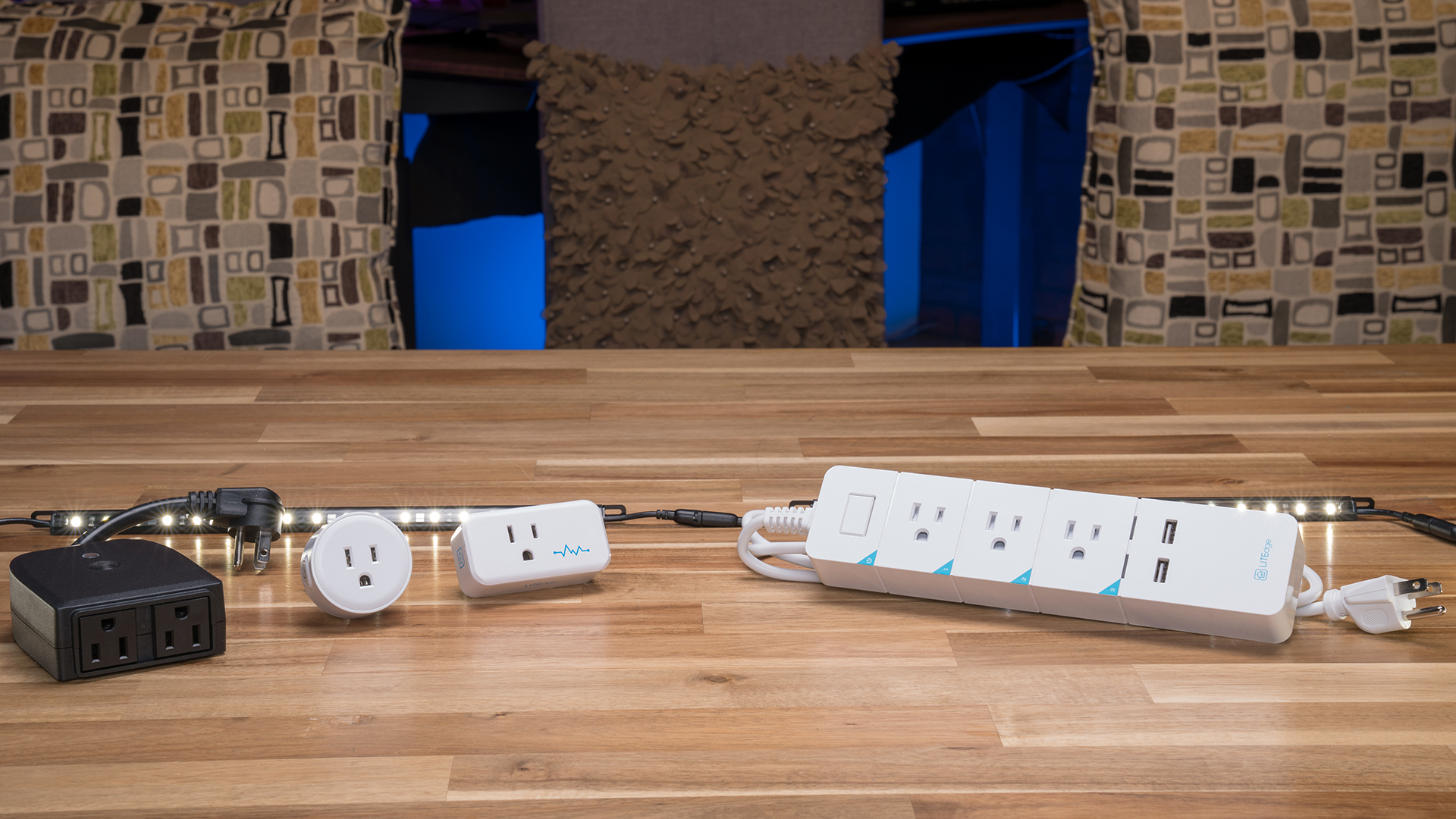
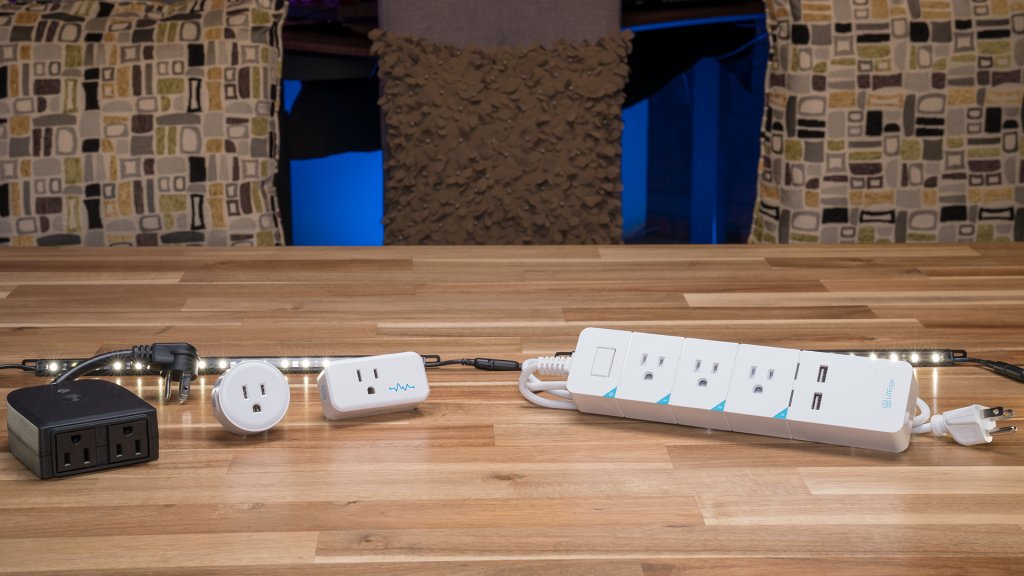
So you want to turn your home into a Smart Home, but you don’t know where to start. You pick up an Amazon Echo because you know you need a voice assistant, but you soon tire of asking Alexa about the weather, or who played the duck in Babe: Pig in the City. You hear about how Alexa skills can help you control your home, but you don’t know what devices you need to get a jump start on Home Automation.
If that scenario sounds familiar to you, then you’ve likely gone through, or are currently experiencing, the growing pains of automating your home. With an ever-expanding variety of Internet of Things (IoT) products on the market, it can be overwhelming finding a good starter kit of devices to upgrade your lifestyle. That’s where LED lighting company Torchstar comes in: after testing their lineup of LITEdge smart devices, I can say that they offer a great launchpad for converting your living space into the automated Smart Home of the future.
Intuitive Home Automation
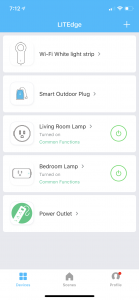 LITEdge is a sub-brand of Torchstar, which sees them employ their engineering expertise towards building an intuitive home automation experience. Core to this experience is the LITEdge app, available on Android and iOS, used to set up and control Torchstar’s suite of smart home devices.
LITEdge is a sub-brand of Torchstar, which sees them employ their engineering expertise towards building an intuitive home automation experience. Core to this experience is the LITEdge app, available on Android and iOS, used to set up and control Torchstar’s suite of smart home devices.
Setting up the LITEdge devices was quicker and easier than many smart home products I’ve used. You open the LITEdge app, click the plus button in the upper left-hand corner of the home screen to add a device and choose the type of product you’re setting up. After that, all you need to do is enter the password for the network you’re connecting to, which initiates the pairing process, and your LITEdge device is ready to go in seconds. I was shocked at how quickly each device connected to my Wi-Fi network: they typically only took about 10 to 15 seconds to go from initialization to fully up and running. Not only that, but I never experienced any errors when setting up any of devices. Usually, I experience at least a couple initial connection failures when setting up smart home products, but no such issues reared their head with the LITEdge devices.
Torchstar’s LITEdge app isn’t crammed with features, but what you do get is a clean, easy-to-navigate UI with the basic functionality you’d expect for a smart home ecosystem. You can remotely control your devices, and enable such automation features as timers, schedules, and scenes The scenes feature lets you create conditional actions for your devices to perform, like turning on your lights at sunset or switching on the coffee maker at sunrise.
With all the potential devices you can add to your network using LITEdge devices, the danger of disorganization arises. Worry not, because the LITEdge app allows you to easily sort the items in your smart home. For one, you can rename your devices and outlets so you can easily tell what’s plugged in and where (e.g. “Living Room Lamp” or “Coffee Maker”). The app also adds an accompanying image to each device, allowing you to control at a glance.
Using the LITEdge app is nice and simple enough, but what’s a smart home without voice control? That’s where Alexa integration comes in. All the LITEdge devices I tested are Alexa-compatible, allowing for hands-free control over powering devices on and off, though enabling scenes are unfortunately excluded from voice compatibility.
Apart from the lack of scene triggering, I can report that Alexa commands work excellently with the LITEdge devices. I didn’t experience any issues with Alexa functionality during my tests. My voice commands were met with near-instantaneous action, and the devices didn’t ever have any issues interfacing with either my Alexa speaker (a Sonos One) or my Alexa app.
The Building Blocks of a Smart Home
Torchstar sent us a range of devices to test out: two smart plugs, an indoor power strip, an outdoor power strip, and an LED light strip. I put them through their paces over a couple weeks to see just how well they could automate my home.
Smart Plugs

LITEdge’s newer smart plug model (left) is designed so you can fit multiples when plugging into the wall or a power strip, versus the old model (right) which generally prevented another from being plugged in next to it.
LITEdge’s two smart plugs function almost identically; the only immediately noticeable difference between the original model and the new model is the body of the plugs. Torchstar revised the shape of their smart plug, changing from a circle on the older unit to a rectangle on the new one, so that you can fit another smart plug on an adjacent outlet. The only functional difference I could find between the two was that the new one supports a max load of 2000W, compared to 1200W on the older model, so it can handle even more electrically-demanding small appliances.
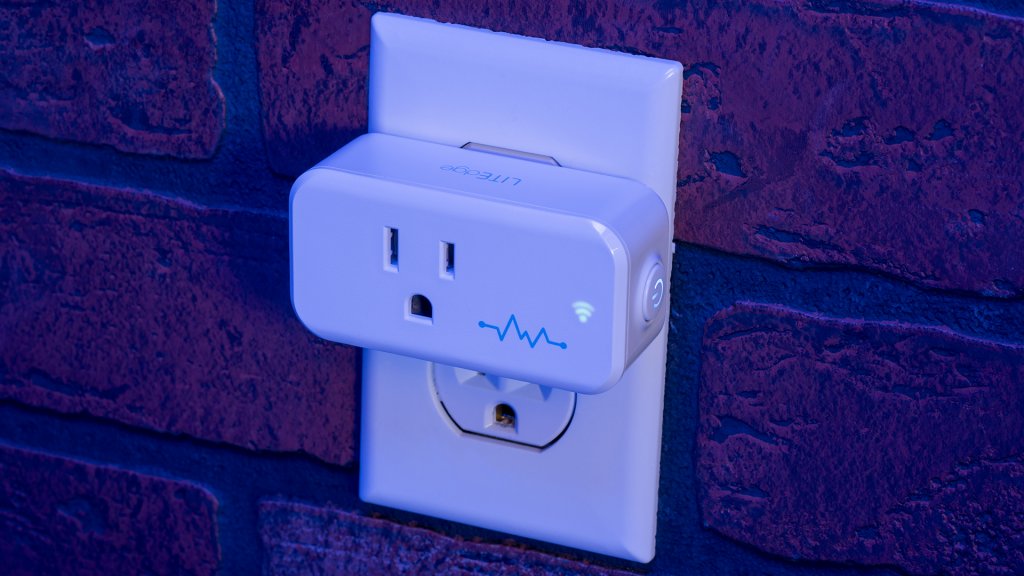
The new model LITEDge smart plug allows you to easily place multiple plugs on a single wall plate or power strip.
My favorite Alexa skill is the ability to control my home’s lighting, so I used each of the smart plugs to control a lamp in my apartment, using the older model with the lamp in my living room and the newer model with the lamp on my bedroom nightstand. Using the LITEdge app, I created a scene for waking up that turned on my bedroom and living room lights at sunrise. The app asks you to confirm your city to ensure accurate scheduling for sunrise and sunset. Sure enough, my lights switched on at almost the exact time I get up in the morning. With the added light, I’ve found my addiction to the snooze button quickly crumbling. Score one for home automation!
In terms of actual usability, both smart plugs performed equally well. Each worked as snappy as the other, powering on within about half a second of my voice command or engaging them in the LITEdge app. I experienced no connection issues with either of them, and they both worked in tandem for my aforementioned sunrise scene, turning on simultaneously. For reliable smart home performance, these are a great starting point for rudimentary remote control.
Smart Power Strip
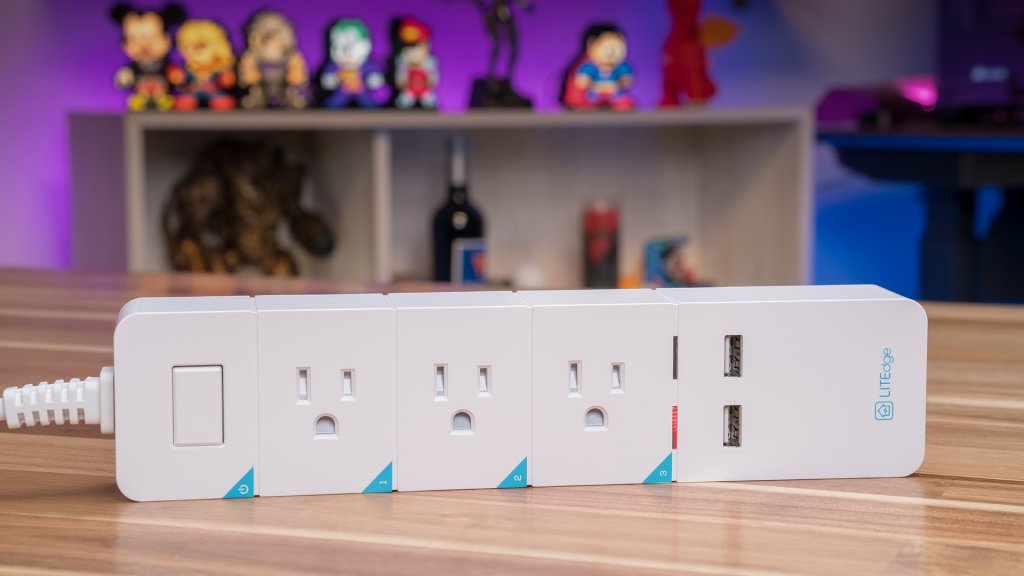
The LITEdge Wi-Fi Smart Power Strip is a surge protector with three outlets and two USB inputs for charging mobile devices (or any USB-powered devices). I set the power strip up behind my entertainment system, and plugged each of my game consoles into the strip’s outlets. I was pleased to find that the LITEdge app allowed me to name each individual outlet and USB input on the power strip, for easier power management and organization. You can also toggle power on and off for the entire strip at once if you so wish. For extra safety, the LITEdge power strip is surge protected, providing peace of mind when lightning strikes.
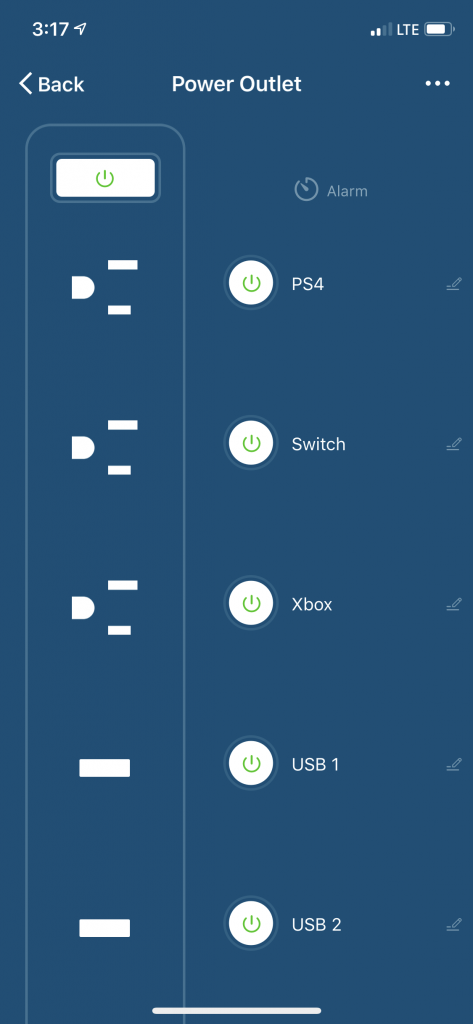
I used the USB ports for charging my iPhone and iPad, which worked reliably. I don’t have much to else to report on that front; I didn’t have any need to toggle power on and off for the USB ports (or really any of the outlets for that matter, since that would essentially prevent my consoles from using their rest modes and installing updates), but I can at least confirm that all the controls in the app, including scenes and schedules, worked perfectly with the power strip. If you have a stockpile of devices you’re itching to integrate into your connected home, then the LITEdge Power Strip is definitely worth a look.
Outdoor Smart Plug
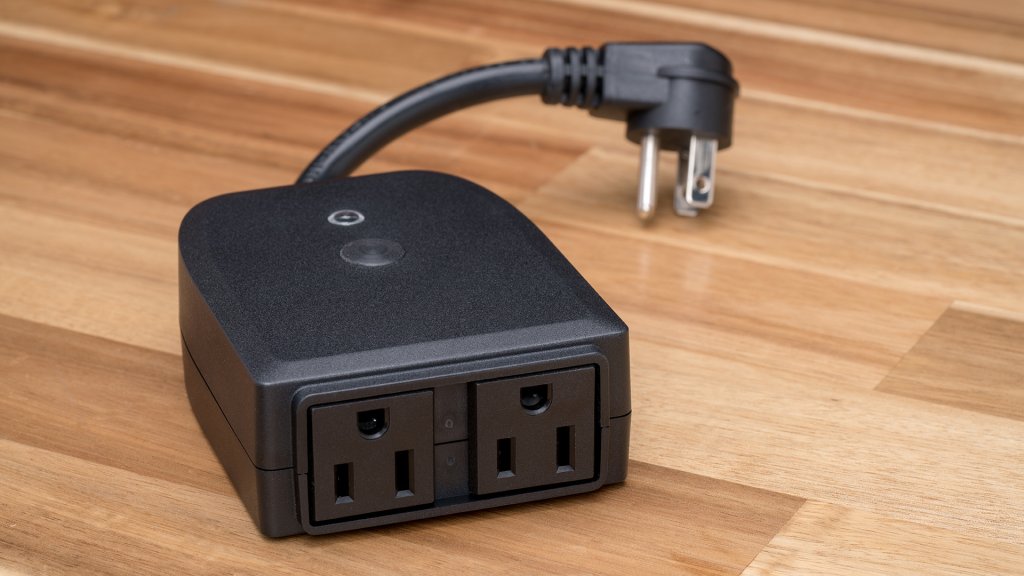
The LITEdge Outdoor Smart Plug functions much like their indoor power strip, albeit with one less outlet and no USB inputs. Much like the power strip, you can rename and control each individual outlet, or toggle power for the entire plug. What makes this a perfect pair of outlets for the outdoors is the IP44 weather-resistance, meaning it can withstand rainfall and keep working. In my tests, I put the outdoor plug on my back patio which, although covered, took in a decent amount of heavy rainfall. Even after multiple days of continuous rain, I didn’t experience issues with the plug.
LITEdge’s Outdoor Smart Plug has a power rating of 1875W, with a max current of 15A. Since the most common instance of using this sort of device would be to automate outdoor lighting or other relatively low-energy devices, you shouldn’t have issues with the capacity. Based on my time with it, I would say the outdoor smart plug is a great device for taking your smart home outside the walls of your house.
Smart LED Light Strip

Want to add a little ambiance to your smart home? Torchstar also makes a Smart LED Light Strip which lacks the LITEdge branding but still works with the LITEdge app and ecosystem. That means not only can you control the light strip with the app, but you can also use Alexa controls and integrate the light strip into scenes right along with the LITEdge devices. The light strip can also be set to strobe or flash if you want some extra pizzazz.
This light strip strictly emits white light, so don’t go in expecting to pair it with your decked-out RGB-lit PC gaming rig. But it emits white light reliably, and with easy controls; like the other LITEdge/Torchstar devices I’ve highlighted, it’s nothing revolutionary, but that doesn’t mean it’s not a solid option for a smart home. I found it provided a soft, pleasant glow at 3000K warm white color temperature (also available in 5000K daylight), that added to my living room’s atmosphere without drawing too much attention to itself. For a simple smart lighting solution, it’s tough to do better than this.
Each LED strip contains 18 diodes which produce a combined 150 Lumens of light, and with an individual length of 12″ the total kit can cover over 6′ including the space between strips for the connectors. Those end connectors are one rather neat element to these light strips. While tape-style LED strips require you to cut the strip to length (thus permanently fixing the overall length of each strip), the LITEdge light strip kit comes with male to female connectors to string the pieces together, so adjusting the overall length of the lighting is simply a matter of adding or removing full strips at any time.
Home Automation Starts Here
Torchstar’s LITEdge devices don’t represent a radical redefinition of the smart home, so much as an excellent refinement of what we’ve come to expect of home automation. The smart plugs are especially impressive, quicker to set up and more responsive than most others I’ve used, and the power strip and outdoor plug gave me more granular control options than I expected. As for the light strip, I wasn’t floored by its features, but that’s not really the point. And that goes for all of Torchstar’s home automation devices: they just work. And when you get down to it, that’s really what you should be looking for when starting your smart home.
Featured in this article:
LITEdge Single-Socket Round Smart Plug- $19.80
LITEdge Single-Socket Rectangle Smart Plug- $16.99
LITEdge Smart Power Strip- $38.96
LITEdge Smart Outdoor Plug- $35.99
LITEdge Smart LED Light Strips 3000K- $44.99
LITEdge Smart LED Light Strips 5000K- $44.99
Note, all prices and products are accurate at the time of article publication, although some may have changed or are no longer available.
